Imagine a creature soaring through prehistoric forests, smaller than a modern housecat, with gleaming feathers on not just two but four limbs. This remarkable animal was Microraptor, one of the most fascinating dinosaurs ever discovered and a crucial piece in our understanding of avian evolution. Dating back approximately 120 million years to the Early Cretaceous period, this diminutive dinosaur has revolutionized our understanding of flight evolution and the relationship between dinosaurs and birds. With its unique four-winged configuration and petite size, Microraptor represents one of paleontology’s most extraordinary findings, offering a window into an evolutionary experiment that preceded modern birds.
Discovery and Scientific Significance
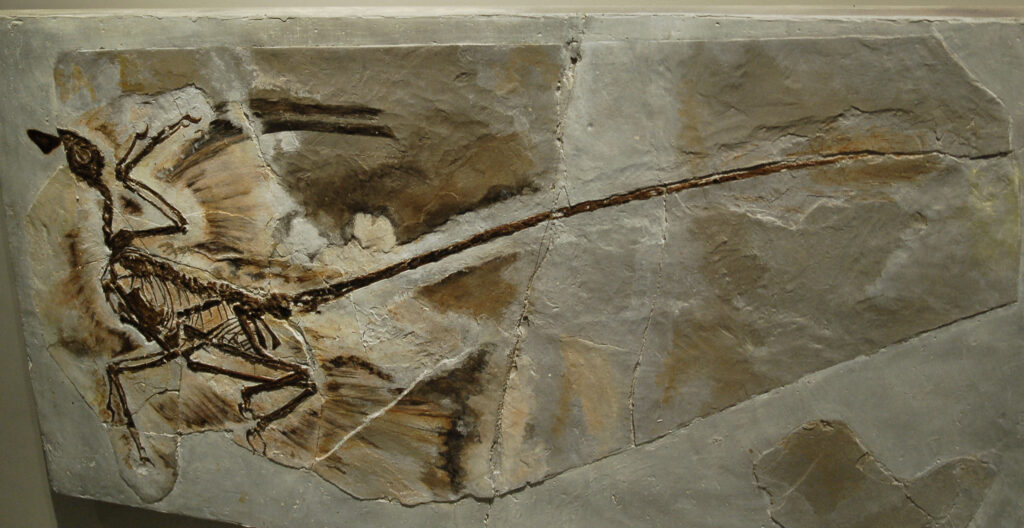
The first Microraptor fossils were discovered in the Liaoning Province of northeastern China in the late 1990s, coming from the famous Jehol Biota—a treasure trove of exquisitely preserved prehistoric creatures. The formal scientific description came in 2000 when paleontologist Xu Xing and his colleagues introduced Microraptor zhaoianus to the world. What made these fossils particularly remarkable was their exceptional preservation, including detailed impressions of feathers around the entire body. The discovery sent shockwaves through the scientific community, as it represented one of the smallest non-avian dinosaurs ever found and provided compelling evidence for the dinosaurian origin of birds. The fossils were so well preserved that scientists could analyze the structure of feathers and determine their arrangement on the animal’s body with unprecedented detail.
Physical Characteristics and Size

Microraptor was truly diminutive by dinosaur standards, measuring just 77-90 centimeters (2.5-3 feet) in length from snout to tail tip, with much of that length consisting of its long tail. Weighing approximately 1 kilogram (2.2 pounds), it was indeed smaller than the average housecat. Its lightweight frame featured hollow bones similar to those of modern birds, an adaptation that likely reduced its weight for aerial movement. Microraptor had a small skull with sharp, serrated teeth suitable for a predatory lifestyle, and its eyes were relatively large, suggesting good vision—an important trait for an animal that likely hunted from the air. Perhaps most remarkably, it possessed long flight feathers not only on its forelimbs but also on its hind limbs, creating a four-winged configuration unlike any living animal today.
The Revolutionary Four-Winged Structure

Microraptor’s most distinctive feature was undoubtedly its four wings, a configuration that has never been observed in any living vertebrate. Long, asymmetrical flight feathers extended from both its arms and legs, creating four wing-like surfaces. The hind limb feathers formed wing-like panels that extended from the ankles, while the forelimb feathers resembled those of modern birds but were attached to arms that still retained functional claws. This arrangement has led to extensive debate about how Microraptor moved through its environment. The tail also featured a fan of feathers at its tip, which likely provided additional stability during aerial locomotion. Computer models and wind tunnel tests have shown that this four-winged configuration would have been aerodynamically functional, allowing the animal to glide efficiently between trees in its forest habitat.
Flight Capabilities and Locomotion

While Microraptor was certainly capable of some form of aerial locomotion, scientists continue to debate the exact nature of its flight capabilities. The prevailing theory suggests that Microraptor was primarily a glider rather than an active flyer. It likely climbed trees using its clawed hands and feet, then launched itself into the air to glide to another tree or to swoop down on prey. Studies of its wing loading (the ratio of weight to wing area) indicate it was well-adapted for gliding through forested environments. Some researchers have proposed that Microraptor may have used a biplane-like configuration during flight, with its hind limbs positioned below its forelimbs, while others suggest it may have extended all four limbs outward in an “X” configuration. The animal’s shoulder joint lacked some of the specialized features seen in modern birds, suggesting it couldn’t perform the powerful upstroke necessary for sustained flapping flight.
Habitat and Environment
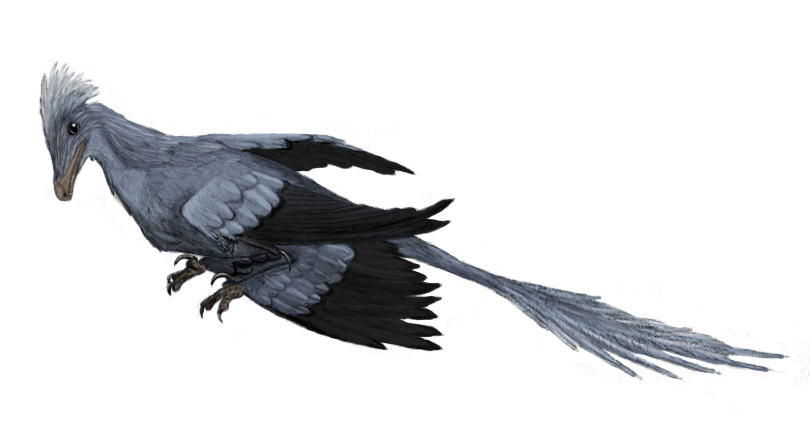
Microraptor lived in a lush, forested environment during the Early Cretaceous period, approximately 120 million years ago. The Jehol Biota, where its fossils have been found, was characterized by coniferous forests, lakes, and streams under a temperate climate. This environment was home to a diverse ecosystem, including primitive flowering plants, conifers, ginkgoes, and various ferns that would have provided ample trees for Microraptor to climb and glide between. The forests were populated by a rich variety of animals, including primitive mammals, early birds, pterosaurs, and other dinosaurs. The numerous trees would have provided both hunting opportunities and refuge from larger predators, making it an ideal habitat for a small, gliding predator like Microraptor.
Dietary Habits and Predatory Behavior
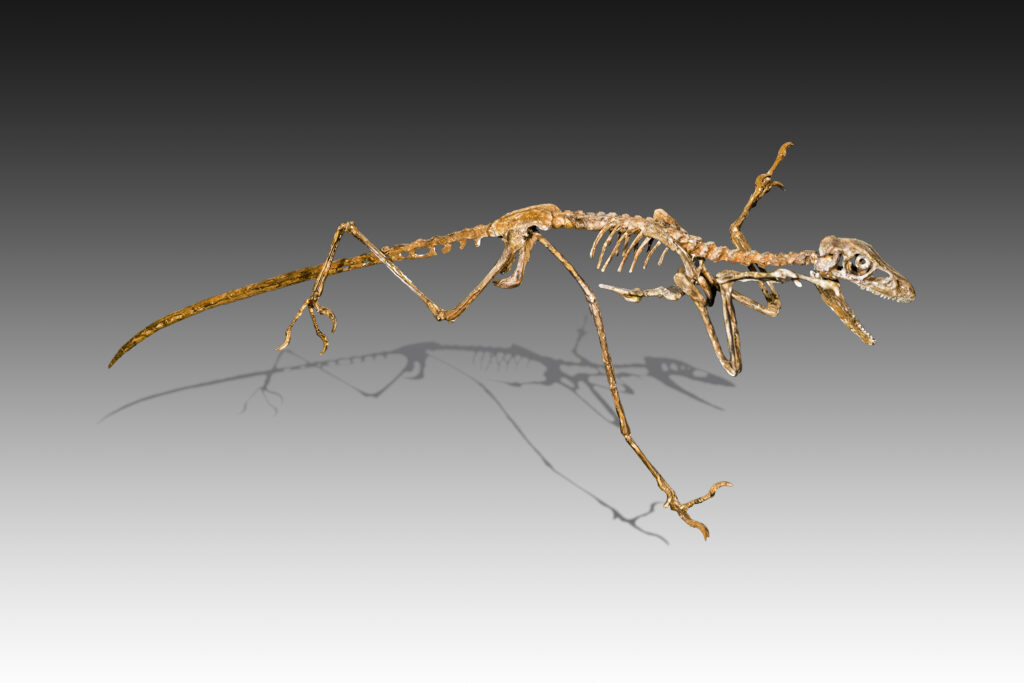
Analysis of Microraptor fossils has provided direct evidence of its diet, making it one of the few dinosaurs for which we have concrete dietary information. One spectacular specimen was discovered with the remains of a small bird preserved in its stomach contents, confirming that it was indeed a predator that consumed other vertebrates. Another specimen contained fish remains, suggesting that Microraptor had a varied diet and may have hunted in multiple environments. Its small, sharp teeth were well-suited for gripping small prey, and its presumed ability to glide would have made it an effective ambush predator, possibly swooping down from trees onto unsuspecting prey below. Some scientists have proposed that Microraptor may have even been capable of catching fish by skimming over water surfaces, similar to some modern birds, though this remains speculative.
Plumage and Coloration

In one of the most remarkable paleontological discoveries related to Microraptor, scientists have been able to determine the actual color of this ancient creature. Microscopic analysis of fossil feathers revealed the presence of melanosomes—cellular structures that contain pigment—preserved in the fossil. The shape and arrangement of these melanosomes indicated that Microraptor’s feathers were iridescent black, similar to the glossy plumage of modern crows and ravens. This iridescent quality would have created a shimmering effect as the animal moved, possibly playing a role in display or mate attraction. The discovery represented one of the first times that scientists could accurately determine the color of a dinosaur, moving beyond the speculative coloration often seen in artistic reconstructions to evidence-based representations.
Evolutionary Significance

Microraptor occupies a critical position in our understanding of the evolution of flight and the relationship between dinosaurs and birds. As a member of the Dromaeosauridae family (related to Velociraptor), it belongs to one of the dinosaur groups most closely related to birds. The presence of four wings in Microraptor has led some scientists to propose that avian flight may have evolved through a four-winged gliding stage before transitioning to the two-winged configuration seen in modern birds. This “trees-down” model suggests that flight began with gliding from heights, rather than the alternative “ground-up” hypothesis in which running dinosaurs evolved flight by increasing the length and surface area of their forelimbs. Microraptor provides compelling evidence that at least some lineages of dinosaurs evolved flight capabilities through an arboreal, gliding phase.
Related Species and Variations
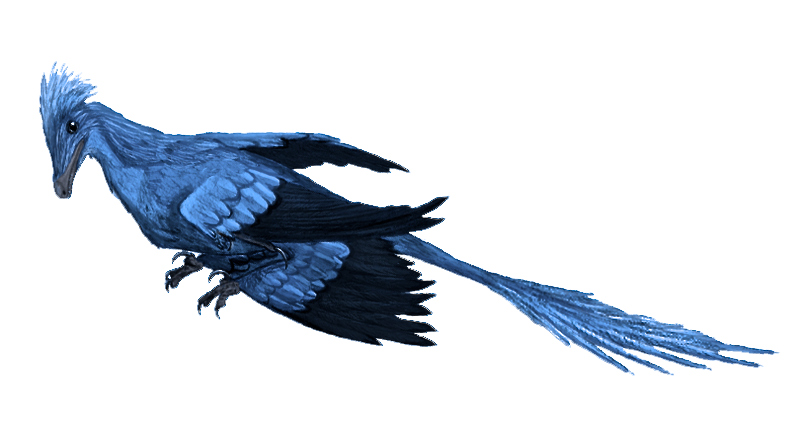
Several species of Microraptor have been named since its initial discovery, though some may represent the same species at different growth stages. Microraptor gui, described in 2003, is known from particularly complete specimens that clearly show the four-winged configuration. Another form, originally named Cryptovolans pauli but now generally considered another Microraptor species, showed similar features. Changyuraptor yangi, described in 2014, represents a related but larger four-winged dinosaur, suggesting that this body plan was more widespread than initially thought. These animals belonged to a group called the Microraptorines, small dromaeosaurid dinosaurs that retained numerous primitive features and adapted to an arboreal lifestyle. The discovery of multiple four-winged dinosaur species suggests that this body plan was a successful evolutionary strategy rather than a one-off oddity.
Feather Structure and Development
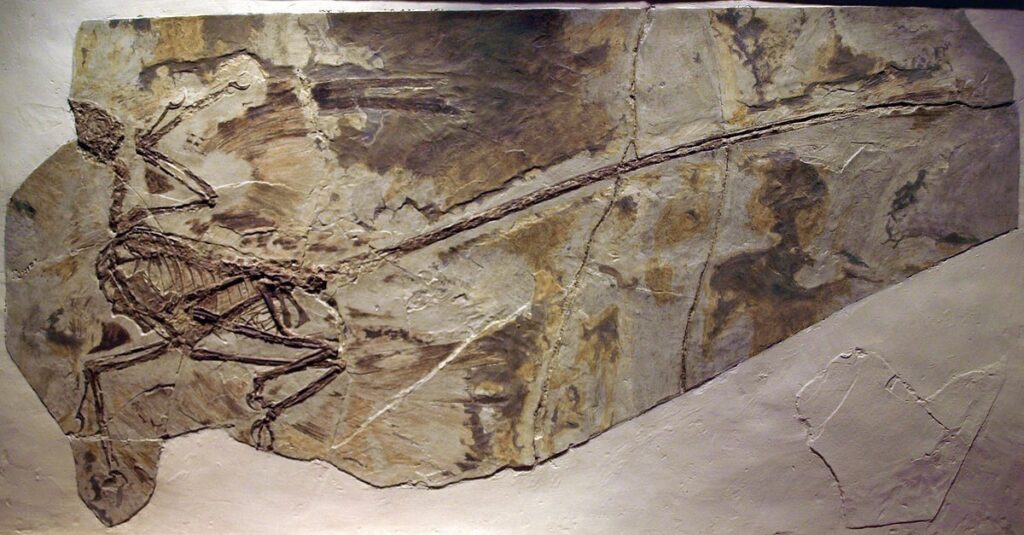
The feathers preserved in Microraptor fossils reveal sophisticated structures virtually identical to those of modern birds, contradicting earlier theories that dinosaur feathers were simple, hair-like structures. Microraptor possessed pennaceous feathers—those with a central shaft (rachis) and barbs forming a flat vane—on both its fore and hind limbs. These feathers were asymmetrical, with the vane on one side of the shaft wider than on the other, a feature associated with flight capabilities in modern birds. The presence of such advanced feathers on a non-avian dinosaur strongly supports the theory that feathers evolved for functions other than flight, such as insulation or display, and were later co-opted for aerial locomotion. Microscopic analysis has revealed that Microraptor’s feathers contained beta-keratin proteins similar to those in modern bird feathers, further cementing the evolutionary connection between dinosaurs and birds.
Fossil Preservation and Taphonomy
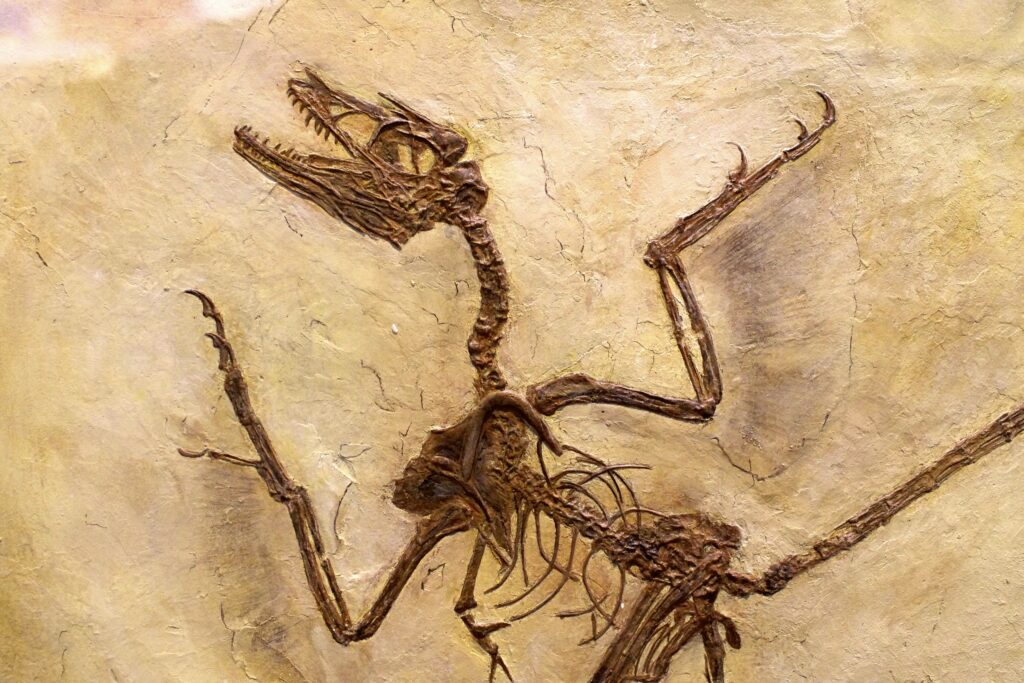
The exceptional preservation of Microraptor specimens is attributed to the unique depositional environment of the Jehol Biota. These dinosaurs were likely buried rapidly in fine-grained lake sediments, often following volcanic eruptions that released ash into the atmosphere. The fine sediment, low-oxygen conditions, and rapid burial prevented significant decomposition and allowed for the preservation of soft tissues, including feathers. Many specimens show the animal splayed out with limbs extended, suggesting they were buried in lake bottoms after falling or being washed into the water. The preservation is so remarkable that even minute details of feather structure and arrangement remain visible after 120 million years. This exceptional fossil record has allowed paleontologists to study aspects of Microraptor biology that are typically lost in the fossilization process of most other dinosaurs.
Scientific Debates and Ongoing Research

Despite the wealth of information provided by Microraptor fossils, several aspects of its biology remain contentious among paleontologists. One major debate concerns whether Microraptor represents a stage in the evolution of flight from non-flying ancestors to modern birds, or if it represents a side branch that evolved gliding independently. Some researchers have suggested that the four-winged configuration might represent a secondary adaptation—that Microraptor’s ancestors might have been capable of more bird-like flight before evolving this specialized gliding arrangement. Another area of ongoing research involves Microraptor’s posture and leg positioning during gliding, with competing hypotheses about whether it held its legs beneath its body, splayed to the sides, or in a specialized configuration during aerial locomotion. Computer modeling, wind tunnel experiments, and comparative studies with modern gliding animals continue to refine our understanding of how this remarkable animal moved through its prehistoric world.
Cultural Impact and Representation

Since its discovery, Microraptor has captured public imagination as one of the most distinctive and visually striking dinosaurs ever found. Its unique four-winged configuration has made it a favorite subject for museum exhibits, scientific documentaries, and paleoart. The discovery fundamentally changed popular depictions of dromaeosaurid dinosaurs, contributing to the now-widespread representation of these animals as feathered rather than scaly. Microraptor has featured prominently in documentaries such as BBC’s “Planet Dinosaur” and PBS’s “NOVA,” helping to communicate the evolving scientific understanding of dinosaurs to the public. The animal’s small size and unusual appearance have made it particularly appealing for educational programs aimed at demonstrating the diversity of dinosaur forms beyond the typical large, fearsome predators that often dominate popular culture.
Conclusion
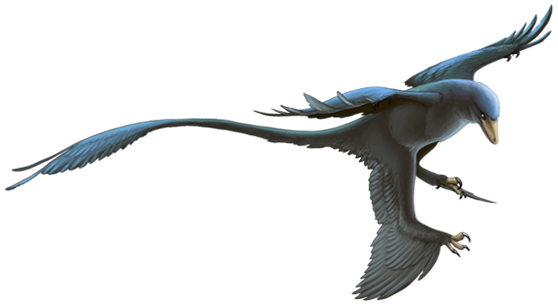
In conclusion, Microraptor stands as one of paleontology’s most remarkable discoveries—a cat-sized, four-winged glider that has dramatically influenced our understanding of dinosaur biology and avian evolution. Its exquisitely preserved fossils have revealed not just its physical structure but also its color, diet, and locomotion strategies, providing a remarkably complete picture of an animal that lived 120 million years ago. As research continues, this diminutive dinosaur remains at the center of important debates about the origins of flight and the relationship between dinosaurs and birds, demonstrating how even the smallest prehistoric creatures can have an outsized impact on our understanding of evolutionary history.




